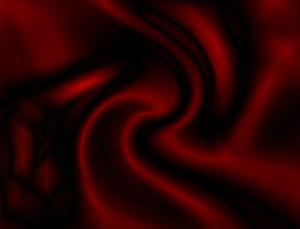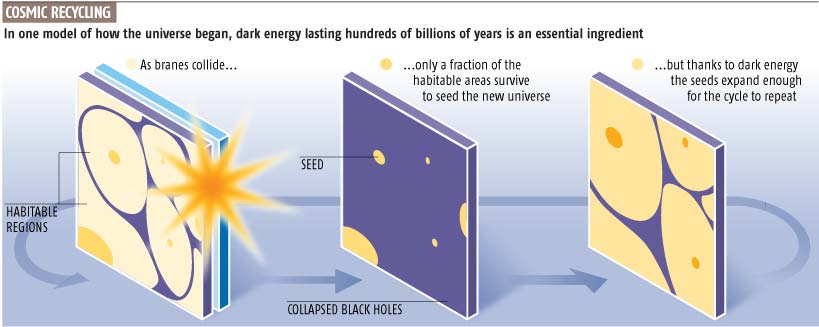
© Stock.xchngThanks to dark energy, the universe may have grown from the ashes of a previous one.
Our universe may have arisen from seeds preserved in a universe that existed before the big bang - all thanks to dark energy.
One of the models put forward to explain how the universe began proposes that it is just the latest phase in a never-ending cycle. Proposed in 2002 by Paul Steinhardt of Princeton University and Neil Turok from the University of Cambridge, the model argues that our universe exists on a 3D region called a "brane" separated from similar branes by a fourth spatial dimension. Under the right conditions, these branes collide, triggering a big-bang-like event. After the collision, the branes bounce apart, before another collision occurs many billions of years later.
This model initially struggled to explain the ripples in the temperature and density of the universe that can be seen in the cosmic microwave background radiation left over from the big bang. The only way to make calculations based on the cyclic model produce the observed pattern of ripples is to add extra dimensions, as predicted by string theory, on top of the four spatial dimensions that the initial scenario envisaged.
Unfortunately, adding extra dimensions throws up another problem. As two branes approach, the additional dimensions must shrink or grow in sync with the dimension that separates the branes. Otherwise, large areas of the brane become warped, so that most of it ends up as black holes and only a tiny proportion as ordinary, habitable space. After several cycles, this space shrinks to nothing, so the process is unlikely to have led to our universe.
Now calculations by Steinhardt and Jean-Luc Lehners, also at Princeton, show that when dark energy - the stuff that appears to be causing the expansion of the universe to accelerate - is brought into the picture, the cycling can be sustainable, so long as dark energy dominates for around 600 billion years.
In earlier cyclic models, dark energy has merely kept the cycles stable, and only dominated for the first 10 billion years or so. The pair say their calculations show that dark energy may in fact last much longer, and so is "absolutely essential" for the endurance of habitable regions. After each clash it would stretch the habitable regions so there is enough left after the next clash, and so on in subsequent cycles. "Most of the universe is consumed in ashes, but the
phoenix universe emerges once again from the small surviving seed," says Steinhardt.

© UnknownCosmic Recycling
This is not the first use of the term "phoenix universe". It was coined in 1933 by Georges Lemaître, an advocate of the big bang theory. "Our model is a more appropriate use of the name," Steinhardt claims. "We were motivated by the same conceptual issue: what happened at the big bang. Was it the beginning or not?"
Like its predecessors, the pair's work is built on a variant of string theory called M-theory which has yet to be completely fleshed out, says Peter Coles of the University of Cardiff in the UK. Andrew Liddle of the University of Sussex, UK, describes their model as a "neat and novel" picture, but adds that it is "hard to believe that we'll ever make observations that could show whether it is right or not".
However, Martin Bojowald of Pennsylvania State University, University Park, says their model is "more realistic" than previous versions, and that future measurements of dark energy may allow the idea to be tested.
..a hypothesis based on hypothesis based on another one makes a bad science.
[Link]